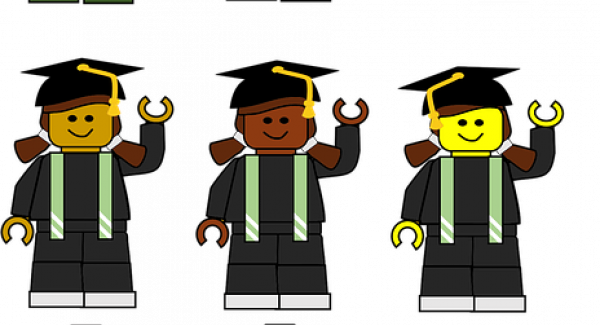How do you make sense of Barack Obama and John McCain? The odds are that you judge them mainly on two dimensions: warm/cold and (in)competence. Depending on your experience of them, you may judge one of them as both warm and competent, evoking your admiration and pride; and perhaps the other as neither warm nor competent, which triggers a sense of contempt and disgust. Or perhaps you view one as warm but not competent, which generates pity and sympathy; or finally, you could judge one of them as cold but competent, leading to feelings of resentment and even envy. All the media hoopla boils down to these two dimensions, which determine the outcomes of Presidential campaigns, but also our ordinary perceptions of other people as individuals or as group members.
Judging people based on warmth and competence
Think back to the last time that you met someone for the first time. What aspects of her or his personality are more important to you? Was the person friendly and trustworthy, with good intentions, or not? Did the person seem able to act on those intentions? The two aspects boil down to warmth and competence. Why might these two dimensions appear everywhere the same basis for making sense of other people? One possibility is that these are the two most essential and adaptive aspects to know, for survival’s sake. If you agree with Charles Darwin's main notion that all animals (humans included) come from millions of years of evolution and natural selection, and if you also go along with evolutionary explanations of human behavior, you might credit the idea that we have to understand other people based primarily on warmth and competence because warmth reveals intentions for good or ill and competence reveals the ability to act on those intentions. Traits such as friendliness, helpfulness, sincerity, trustworthiness, and morality reflect warmth; and competence appears as intelligence, skill, creativity, and efficacy. So, if you meet someone for the first time, you spontaneously look for clues pointing to the person’s good (or bad) intentions (i.e., warmth) and ability (or inability) to act on these intentions (i.e., competence). Years ago, Rosenberg and his colleagues (1968) examined scores of personality descriptions, and their statistical analyses suggested two primary dimensions of social perception: social good-bad (warmth) and intellectual good-bad (competence). More recent psychology supports this conclusion. Bogdan Wojciszke, studying how people understand others, has found that warmth and competence together determine more than 80 percent of our impression of others (Wojciszke, 2005; Wojciszke & Klusek, 1996).
One immediate question would be: Which dimension comes first when we judge another person? Maybe you guessed it:warmth is the correct answer (Peeters, 2002). Intuitively, we know that someone intending good or ill toward others is more important than the ability to act on that intention. Knowledge of warm or cold intent is more familiar to us, more sought by us, more helpful in predicting others' behavior, and more considered when evaluating others. In one experiment on how rapidly people evaluate warmth and competence in others, people perceive someone's warmth more quickly than competence, and they do so in a fraction of a second (Willis & Todorov, 2006).
Of course, people and situations make a difference. Women and people from so-called collectivist cultures (e.g., China or Japan) are even more sensitive to warmth than competence (Abele, 2003). What’s more, some situations may lead us to attend especially to others’ warmth than their skills—or vice versa. Given a specific context, people may understand some social behaviors either in terms of warmth or competence (e.g., rushing out of a meeting could be interpreted either as helping a colleague or abandoning a meeting). Contexts also may be viewed from one’s own or others’ perspectives, and this too matters (Wojciszke, 1994). When actions are framed from one’s own perspective, undergraduates interpret them in terms ofcompetence, and when the same actions are framed from an other’s perspective, these undergraduates make sense of the other based on the warmth dimension. Specifically, in this study participants were asked to assume playing the role of either an actor or observer and subsequently received descriptions of a series of actions. The actions could be interpreted both as competent and moral. For example, they read that an employee ingratiated herself with her boss but did it in such an obvious way that it angered the boss. Then participants were to judge this action from the employee (the actor) or the boss (the observer) and to write down why they judged the way they did. The results indicated that when participants were playing the role of an actor, they tended to focus on warmth, and when they were playing the role of an observer, the competence information was more salient to them.
Judging social groups based on warmth and competence
In the warmth-competence space, in most societies studied so far, what appears is an ingroup (a person’s own group, which forms the person’s social identity) and three outgroups (a group with which a person does not identify). The ingroup is usually rated as both warm and competent, but the outgroups are rated as lacking either warmth or competence or both. For example, in the USA, at the present time, middle-class people, Christian people, heterosexual people, and US citizens all are societalingroups. People rate these groups as high on both warmth and competence, and they express pride and admiration for them (Cuddy et al., 2007; Fiske, Xu, Cuddy, & Glick, 1999; Fiske, Cuddy, Glick, & Xu 2002).
On the other hand, poor white people, poor black people, welfare recipients, homeless people, drug addicts, and undocumented migrants are societal outgroups (Cuddy, Fiske, & Glick, in press; Fiske et al. 1999; Fiske et al. 2002; Lee & Fiske, 2006). These groups reportedly elicit contempt and disgust more than all other groups. These extreme outgroups are the lowest of the low, in people’s minds, and seen as less human than other groups, according to brain scans of people viewing photographs of people from these groups (Harris & Fiske, 2006).
Most of the time, however, people are more moderate and forgiving toward outgroups. People tend to perceive members of mostoutgroups as high on one dimension (e.g., warmth) and low on another (e.g., competence). For example, in the US, people who are older, physically-disabled or mentally-disabled are viewed as warm but incompetent. These groups elicit pity and sympathy (Cuddy, Fiske, Kwan, Glick, Demoulin, et al., in press; Fiske et al. 1999, 2002; Fiske & Cuddy, 2006). Other groups are viewed as competent but cold and untrustworthy. In the US, these currently include rich people, Asian people, Jewish people, female professionals, and minority professionals. These groups elicit envy and jealousy more than other groups. This pattern appears in most countries, and generalizes to outgroups’ –subgroups, such as different kinds of women (warm-incompetent homemakers but cold-competent feminists) and different kinds of gay men (warm-incompetent ‘clowns’ but cold-competent professionals).
Although perceptions of individuals and groups operate in similar ways, some subtle differences appear. When we judge an individual person as warm, we tend to judge her or him as competent too (a phenomenon called the "halo effect" in social psychology) (Judd, James-Hawkins, Yzerbyt, & Kashima, 2005; Rosenberg et al., 1968; Zanna & Hamilton, 1972). In contrast, and curiously, when we judge entire social groups as warm or competent, we judge quite differently (Fiske, 1998; Fiske at al. 1999; Yzerbyt, Provost, & Corneille, 2005). When thinking about groups, people tend to create warmth-competence trade-offs or "compensations." A group may be warm or competent but not both (except our own group, of course). For groups, at least groups not our own ("outgroups"), warmth and competence do not go hand in hand.
Warmth and competence and their relationship with discrimination and stereotypes
Combinations of warmth and competence matter because they predict unique forms of discrimination. Not all bigotry is identical. Fiske and colleagues call this pattern of relationship BIAS, for Behaviors from Intergroup Affect and stereotypes (Cuddy et al., 2007). Because the warmth dimension is the primary factor in social perception, it predicts active behaviors towards the member of the outgroup: Active facilitation (helping) versus active harming (attacking). Because competence is the secondary factor in social perception, it predicts passive behaviors: passive facilitation (association) and passive harm (neglect). The typical societal ingroup usually receives both active and passive facilitation (i.e., helping and association), whereas the lowestoutgroups, such as homeless people receive both kinds of harm (i.e., active attacks and passive neglect).
Some interesting observations result from the mixed combinations. For example, old and disabled people elicit active helping and passive neglect; institutionalization actively aids them but socially isolates them. By contrast, envied groups elicit passive association and active harm; for example, neighbors might shop at the stores of entrepreneurial outsiders, but, under societal breakdown, they might attack and loot these same shops. Jews during the Holocaust, Koreans in the Los Angeles riots, and Chinese in the Indonesian riots all exemplify this unfortunate profile.
What best predicts these unique patterns of discrimination? Or put simply, what causes people to treat harshly members of another social group that seems to differ from theirs? Emotions drive discrimination. The stereotypes represent warmth andcompetence, but the stereotypes elicit emotional prejudices as well (e.g., envy, pity, or disgust). It is the emotions in and of themselves that direct behaviors such as discrimination.For example, stereotyping John McCain as an older man can lead to pitying and therefore not voting for him in the US 2008 presidential election, or resenting and therefore not voting for Barack Obama because of stereotyping based on the fact that he attended elite schools. The chain, then, is stereotypes-emotions-behaviors.
However, the stereotypes, emotions, and behavior themselves all reflect groups’ and individuals places’ in society. That is, when one’s ingroup goals clash with those of an outgroup, the ingroup perceives that outgroup as a foe—as unfriendly and untrustworthy (i.e., not warm)—but if there is no goal conflict between the ingroup and the outgroup, the outgroup is perceived as a friend—friendly and trustworthy (i.e., warm). The other dimension, stereotypic competence, comes from the group’s perceived status. High-status groups are assumed to be competent, and low-status groups, not competent. People seem to endorse a meritocracy, where people get the status they deserve based on talent (Oldmeadow & Fiske, 2007).
Conclusion
All in all, warmth and competence are two fundamental human traits that remarkably determine our perception of other people. They seem to be universal in terms of stimuli, time, and culture. Back to the opening example of Obama and McCain, Obama could be seen as an elite professional (competent but cold) or as part of the American dream (both competent and warm). Likewise, McCain could be seen as a rich man (competent but cold) or as an American hero (both competent and warm). As we watch, the campaigns each seek to frame their candidate's image along these dimensions, in the desired direction, to elicit the desired emotions (pride, admiration) and behavior (active and passive help), most importantly, voting. Group-based prejudices play an important role as well, because stereotypes typically appear high on one dimension and low on the other; the ensuing ambivalent affect and volatile behavior potentially endanger constructive intergroup relations. Whether we’re talking candidates, neighbors, or societal groups, our warmth and competence perceptions will drive our collective and individual futures.
References
Abele, A.E. (2003). The dynamics of masculine–agentic and feminine– communal traits: findings from a prospective study.Journal of Personality and Social Psychology, 85, 768–776.
Cuddy, A. J. C., Fiske, S. T., & Glick, P. (2007). The BIAS map: Behaviors from intergroup affect and stereotypes. Journal of Personality and Social Psychology, 92, 631-648.
Cuddy, A. J. C., Fiske, S. T., & Glick, P. (in press). Competence and warmth as universal trait dimensions of interpersonal and intergroup perception: the stereotype content model and the BIAS map. In Advances in Experimental Social Psychology (Zanna, M.P., ed.), Academic Press.
Cuddy, A. J. C., Fiske, S. T., Kwan, V. S. Y., Glick, P., Demoulin, S., Leyens, J-Ph., et al. (in press). Is the stereotype content model culture-bound? A cross-cultural comparison reveals systematic similarities and differences. British Journal of Social Psychology.
Fiske, S. T. (1998). Stereotyping, prejudice, and discrimination. In D. T. Gilbert, S. T. Fiske, & G. Lindzey (Eds.), Handbook of social psychology (4th ed., Vol. 2, pp. 357-411). New York: McGraw-Hill.
Fiske, S.T. & Cuddy, A. J. C. (2006). Stereotype content and relative group status across cultures. In Social Comparison Processes and Levels of Analysis: Understanding Culture, Intergroup Relations and Cognition (Guimond, S., ed.), pp. 249–263, Cambridge University Press.
Fiske, S. T., Cuddy, A. J., Glick, P., & Xu, J. (2002). A model of (often mixed) stereotype content: Competence and warmth respectively follow from perceived status and competition. Journal of Personality and Social Psychology, 82, 878-902.
Fiske, S. T., Xu, J., Cuddy, A. C., & Glick, P. (1999). (Dis)respecting versus (dis)liking: Status and interdependence predict ambivalent stereotypes of competence and warmth. Journal of Social Issues, 55, 473-491.
Harris, L.T. and Fiske, S.T. (2006). Dehumanizing the lowest of the low: neuro-imaging responses to extreme outgroups.Psychological Science, 17, 847–853.
Judd, C. M., James-Hawkins, L., Yzerbyt, V., Kashima, Y. (2005). Fundamental dimensions of social judgment: Understanding the relations between judgments of competence and warmth. Journal of Personality and Social Psychology, 89, 899-913.
Oldmeadow, J., & Fiske, S. T. (2007). Ideology moderates status = competence stereotypes: Roles for Belief in a Just World and Social Dominance Orientation. European Journal of Social Psychology, 37, 1135-1148.
Peeters, G. (2001). From good and bad to can and must: subjective necessity of acts associated with positively and negatively valued stimuli. European Journal of Social Psychology, 31, 125–136.
Rosenberg, S., Nelson, C., & Vivekananthan, P. S. (1968). A multidimensional approach to the structure of personality impressions. Journal of Personality and Social Psychology, 9, 283–294.
Willis, J., & Todorov, A. (2006). First impressions: making up your mind after a 100-ms exposure to a face. Psychological Science, 17, 592–598.
Wojciszke, B. (1994). Multiple meanings of behavior: construing actions in terms of competence or morality. Journal of Personality and Social Psychology, 67, 222–232.
Wojciszke, B. (2005). Affective concomitants of information on morality and competence. European Psychologist, 10, 60–70.
Wojciszke, B. and Klusek, B. (1996). Moral and competence-related traits in political perception. Polish Psychological Bulletin, 27, 319–324.
Yzerbyt, V. Y., Provost, V., & Corneille, O. (2005). Not competent but warm... Really? Compensatory stereotypes in the French-speaking world. Group Processes and Intergroup Relations, 8, 291-308.
Zanna, M. P., & Hamilton, D. L. (1972). Attribute dimensions and patterns of trait inferences. Psychonomic Science, 27, 353-354.




